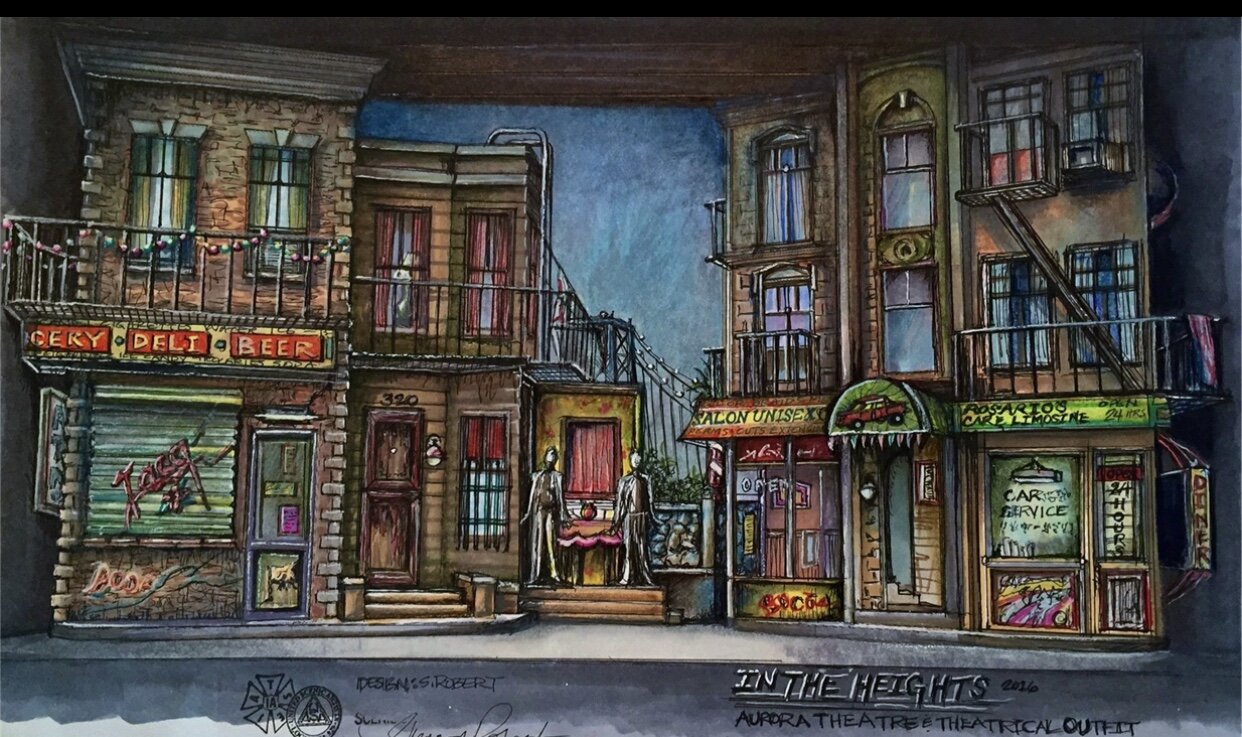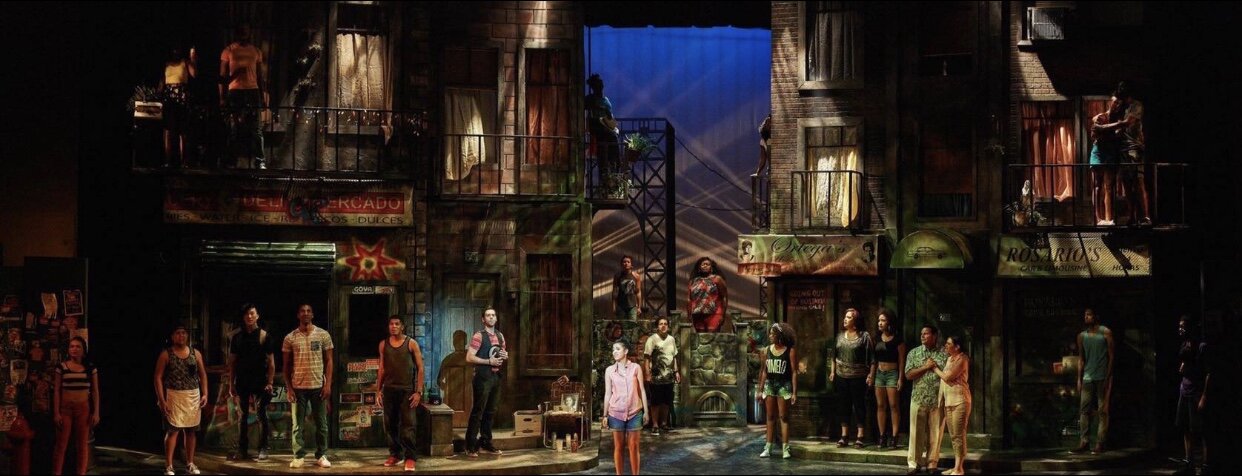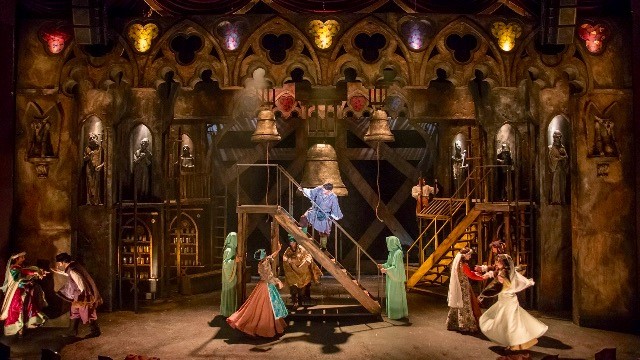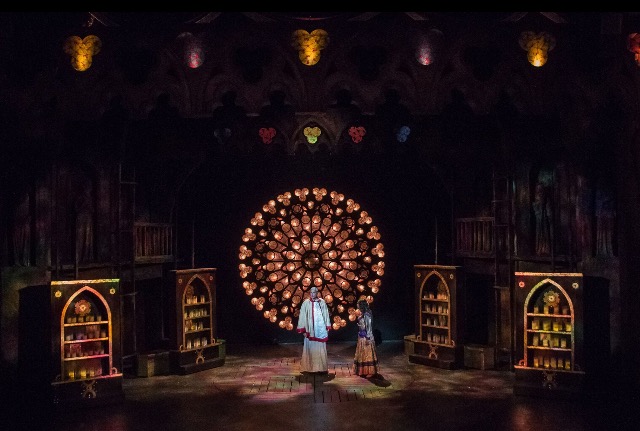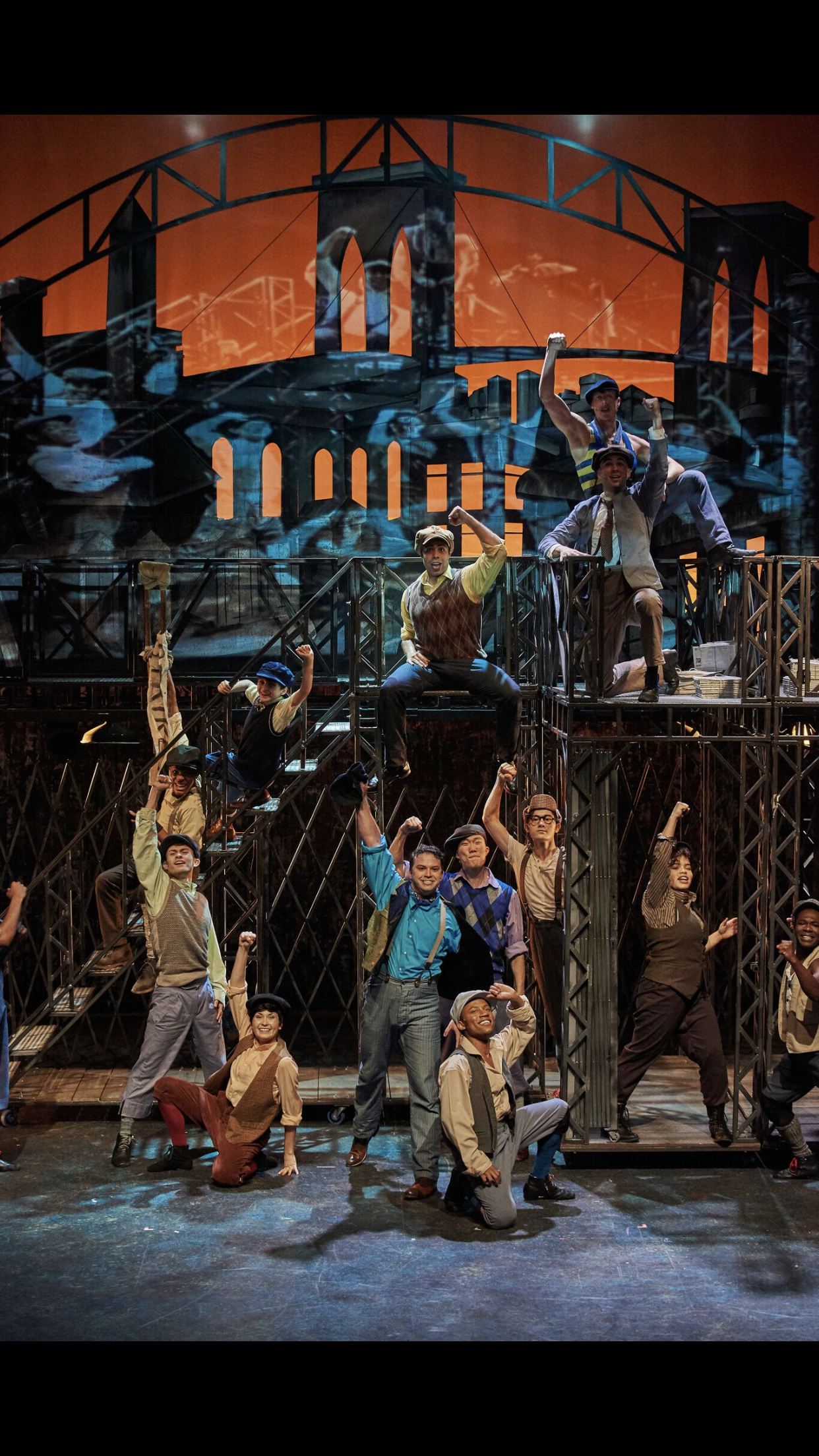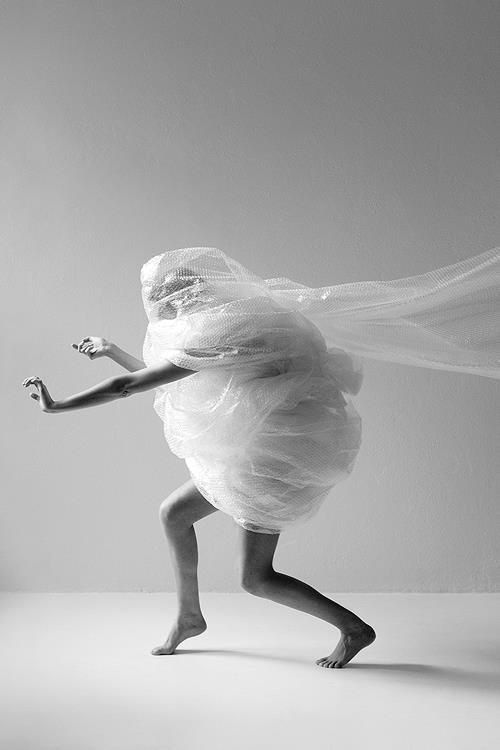Charlotte has been exploring site-specific ideas with her students in Texas. Photos above were taken by TJ Martinez in the new School of Theatre and Dance facility at TTU.
Cross/Currents /
We are excited about our next project “Cross/Currents”, taking place in Richmond, Virginia in November. This is a site-specific production commissioned by the University of Richmond's School of Theatre and Dance..
Read more about the artists involved by going to: www.now-id/current/.com
Richmond collaborator. /
We are excited to be collaborating with poet Joanna Suzanne Lee on our production "Cross/Currents" in Richmond, Virginia in November.
Joanna earned her MD from the Medical College of Virginia in 2007 and a Master’s in neuroscience from William & Mary in 2010. Focusing on the intersection of healing and creativity, her poetry has been published in a number of online and print journals and has been nominated for both Best of the Net and Pushcart prizes. Dissections, her first chapbook, was published in 2017 (Finishing Line Press). Joanna is a founder of the River City Poets community and a co-editor of the recently published anthology, Lingering in the Margins. She lives in Richmond, Virginia with her husband John and cat Max.
NE PLUS ULTRA: DESIGNER SHANNON ROBERT /
Shannon Robert
Shannon Robert serves on the design faculty at Clemson University, and is a proud member of USA 829. She received the M.F.A. in scene design from Florida State University and studied at the Moscow Art Theatre Conservatory in 1991. Shannon was director of theatre and head of design at William Carey University and serves as a member of the Hollins University M.F.A. Playwriting Faculty (in the area of design). She served KCACTF as Region IV design chair, regional vice chair, and on national design committees. Shannon served on the board of directors and executive committee of SETC. She managed the paint/craft departments of The Spoon Group Productions in NJ/NY, and fabricated props/painted for the Broadway productions of The Grinch, Grease, Xanadu, Legally Blonde, Inherit the Wind, The Pirate Queen, Coram Boy, The Color Purple, Jersey Boys, Spamalot, and Hairspray. With Technical Theatre Solutions, she painted for the national tours of Cinderella, In the Heights, Mamma Mia (Vegas) and Something Rotten. For TTS Studios, she painted the London Barbicon and US tours of Jesus Christ Superstar. She has designed for The Warehouse Theatre, Aurora Theatre, Cincinnati Shakespeare, Theatrical Outfit, Salt Lake Acting Company, The Tennessee Williams Festival (Provincetown) Actor’s Express, Mill Mountain Theatre, Synchronicity Theatre, Serenbe Playhouse, Brian Clowdus Experiences, New Stage Theatre, Auburn University Theatre, Texas Tech University Theatre, Middle Tennessee State University, Southern Arena Theatre, University of Southern Mississippi, The Peace Center (Gala) and the University of West Georgia. She has worked internationally as a designer, consultant, and respondent. She served as design consultant for Albert and Associates Architects for The Saenger Theatre renovation, and as the Productions Unlimited consultant for the Upstate Children’s Museum featured climbing sculpture and has designed installations for the Upcountry History Museum (SC) for Jan Brett and Jerry Pinkney. Shannon was the Associate Artistic Director and Scene Designer in Residence for The Warehouse Theatre in Greenville, SC. She received Atlanta’s 2014, 2016, and 2018 Suzi Bass Awards for best set design for a musical for Mary Poppins, In the Heights, and The Hunchback of Notre Dame, and the Broadway.com Best Set Design for a Musical for In the Heights (Atlanta). Most recently, Shannon’s work was selected for the PQ 2019 Exhibition in Prague as part of the United States Transformations Exhibit sponsored by USITT.
I have known Shannon for five years now and am so taken with her imagination, creativity, artistry, ingenious sense of humor and generosity of spirit. I am excited to feature her voice here.
Please enjoy!
Charlotte Boye-Christensen
Tell us a little bit about your background; where are you from and how did you become a designer?
I am from New Orleans, LA. I was always interested in storytelling, art, and how people decorated their homes. When I was in fifth grade, I was selected for a gifted/talented art class taught by a man named Lloyd Sensat - he taught us one and two point perspective in fifth grade - we went to some of the local plantation homes to draw them and our work was displayed at Diversity Gallery in the French Quarter weeks later. We learned the stories of the plantation owners, the slaves, and how the homes were built. It was then that architecture and historic places started to dance in my head - loved learning about the history of how things were built because of climate and codes. I continued drawing, started doing theatre in high school - thought that I was going to become an actor (lol - gulp). I came to my senses in college when I realized I could actually make a living doing design and that I really liked it. My father tried to convince me to go to law school, but I decided to do an MFA in design. During those studies, I did an exchange with the Moscow Art Theatre Conservatory - that is how it all began.
What does it mean to be a production/set designer, what responsibilities do you have and who do you mainly collaborate with on set?
I collaborate with the entire team - when it is a new piece, that includes the playwright. It truly is a collaborative art. Typically, after reading the play several times, we meet and discuss how the director would like to tell the story - a big part of what we do is talk about what we see and think when we read the piece. Ultimately, it is important that we all land on the same page and serve the story the way the director is telling it, but we would not be doing our jobs if we didn't share what we got out of the play when we read it - this is important because with our different perspectives and ways of looking at the world around us, we might hit on themes, images, ideas that were not considered by others - I always love hearing what people get out of what they are reading.
After this initial phase, we go away and develop images, look books, pull out given circumstances, figure out how to create the world with our team, cast, in this moment, in the space we have with our budget and so on. My job is to serve the story and help the director tell it by creating the dramatic tension the piece wants. I pay attention to movement patterns and how the actors are using the space - there are times I have to make modifications so that the space works for the people who are using it and "living in it."
“In The Heights”
Tell us a little bit about the highlights of your career so far?
There have been so many highlights. I love creating moments that touch people. If I know that my work moves someone in a way that counts, I get great satisfaction from that. I also have enjoyed doing work that has an environmental approach - I love projects that allow me to feature or focus on recycling, upcycling, or think about sustainable sourcing - we need to do far more of that in our very wasteful industry.
Can you talk about your process?
Honestly, I feel that my process changes based on the play and the team - there are, of course, similarities in technical process, but the words on the page guide our direction and where we land - historical period plays require a different approach to research than a fantastical imaginary world, so I begin in different places. Some plays are language based, some are movement based or driven by the physical, others are driven by metaphor and image - some are linear, some are rooted in memory, or do not follow a sequential pattern. Each one of these specific methods of telling a story asks different questions of designers and directors. We have to unpack those questions together to reveal how we are going to answer those questions. That often informs me of where to begin and I usually get a gut punch on where to dig and what to explore further. I have learned that it is okay to not have answers to the questions right away - sometimes that is the point. I have also learned in my process that it is okay to let go of things when I am wrong about them - I never marry an idea. Something that might be precious to me (for whatever reason) might not jive with the director or work with the other elements - gotta let it go and figure out what will - this is always an important part of process.
I always push to reuse materials and reimagine them - I get excited about spending the least amount possible AND not putting anything new in landfills - keep it going.
“Newsies”
What was the worst experience you have had as a production/set designer?
I designed (and directed) a production of Mary Zimmerman's Metamorphoses with a 6000 gallon pool in a theatre with a concrete deck (which I always loathed, but turned out to be fortunate). Everything with the set worked out swimmingly - I enjoyed the process and loved the production. We used a pump during the day to circulate the water through a heating system. At one point the technical director cleaned the pump and was putting clean water in from a hose. He somehow managed to accidentally pull the hose out of the pool and let it run for nearly an hour onto that concrete deck. There was about three inches of water in the space when he realized what he had done. It was all hands on deck to clean and dry it - it took about three hours and was a nightmare. We had a show that evening. I never want to deal with that kind of thing again. Ever.
Who are some of the people who have inspired you in your work?
I am inspired by words and thoughts - sometimes when I think of the beautiful things said by some of the masters in my field, I get chills. These are a few that hit me:
Robert Edmond Jones: In The Dramatic Imagination, he wrote:
“Many people confuse imagination with ingenuity, with inventiveness. But imagination is not this thing at all. It is the peculiar power of seeing with the eye of the mind. And it is the very essence of the theatre.”
Bertholt Brecht: "He who fights can lose. He who doesn't fight has already lost."
Jerzy Grotowski: "If you want to create a masterpiece, you should always avoid beautiful lies."
Bob Marley: "One good thing about music, when it hits you, you feel no pain."
What do you consider to be the most significant film ever made and why? Ooh - that is hard. There are so many that are great for different reasons. Just one? I have to say Citizen Kane, but I also really loved Pan's Labyrinth, The Shawshank Redemption, The Color Purple, and Schindler's List.
What is your favorite piece of art?
The Garden of Earthly Delights by Hieronymus Bosch - it is utterly fascinating - I could look at it forever and never tire of it- I want to have a conversation with him and get into his head when I see it. Damn. No words. Someone has done little sculptures of some of the characters that, if asked, most people would likely date as contemporary. They would never guess that those pieces were inspired by a triptych done in the late 15th century.
“The Garden of Earthly Delights” by Hieronymus Bosch
Who is your favorite Designer?
Rachel Hauck, set designer for Hadestown and What the Constitution Means To Me. Total badass rockstar. I am also really digging the work of David Korins and Derek McLane.
What is your favorite city that you have visited?
Paris and Prague (I obviously have a hard time choosing just one when you ask me to do that). They are both romantic, have rich histories, have unique cultures, beautiful architecture, and beautiful art. They both fill my heart in different ways, but how can one not love these cities?
What do you think the biggest misconception is about creating theatre?
That it does not take rigor or that it is "play" that doesn't require thought - there is so much math, science, engineering, technology, and purpose that goes into each decision. People are always amazed when they do realize what actually happens behind the scenes.
“Hunchback of Notre Dame” and “Sketches”
What is your favorite quote?
First they came for the socialists, and I did not speak out—because I was not a socialist.
Then they came for the trade unionists, and I did not speak out— because I was not a trade unionist.
Then they came for the Jews, and I did not speak out—because I was not a Jew.
Then they came for me—and there was no one left to speak for me.
Martin Niemöller
I think this is an important quote and right now, at this time in our human journey, people need to hear it and be reminded how hatred works.
Why are you based in South Carolina and how do you feel that your location impacts your work?
I moved here with my ex-husband from New York (after growing weary of always being stuck on the Jersey Turnpike, or in the Lincoln Tunnel). I used to teach and I wanted to do that again. When we first moved down, I became the resident designer and associate artistic director of The Warehouse Theatre. I now teach full-time at Clemson University. A few things: there is nothing better than working with students and watching them grow their confidence and soar and succeed. I know that I cancel out a vote here and my being here makes a difference. I do end up traveling quite a bit for my free-lance design work, but I enjoy that. I get away and I have something new to bring home each time. Wherever I go, there I am. I don't feel like location matters in this fluid world in some ways, but the audience base is smaller and more conservative here, but understanding who your audience is and how to "share stories" with them is part of this art form and I think it has given me a better understanding of the politics of creating theatre art.
“Big Love”
Who is the one person that you have always wanted to work with?
Anna Louizos - she is amazing. I love the detail in her work.
Looking towards the future – where do you want to be and what do you want to be doing in 25 years?
25? Wow - hope I am still upright and walking. I would love to be on a beach or in the mountains somewhere breathing clean air, drinking clean water, growing my own food, looking at our natural world that we learned to take care of. I hope I am with friends who care about our globe, about humanity, and about stories.
Cross/Currents! /
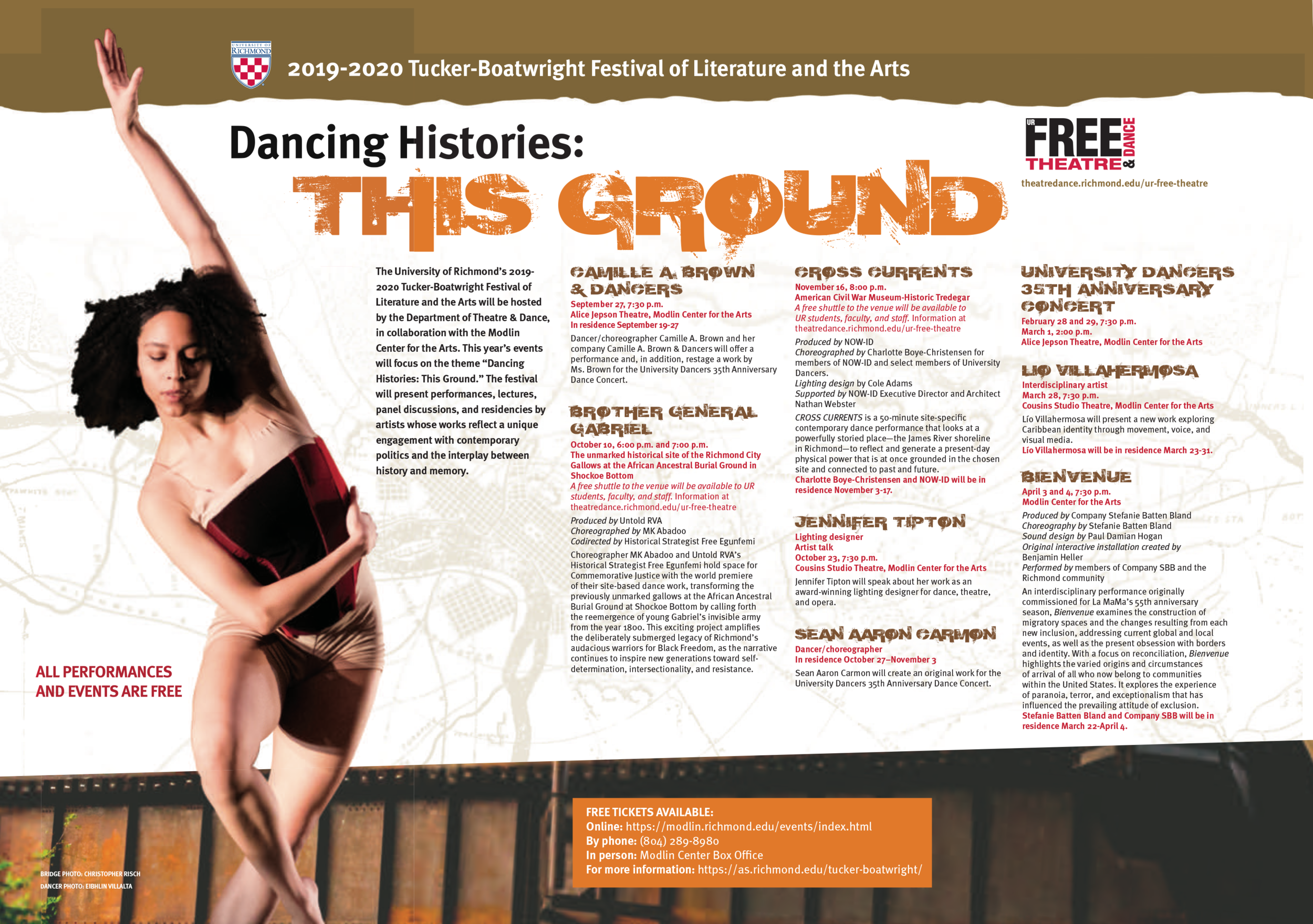
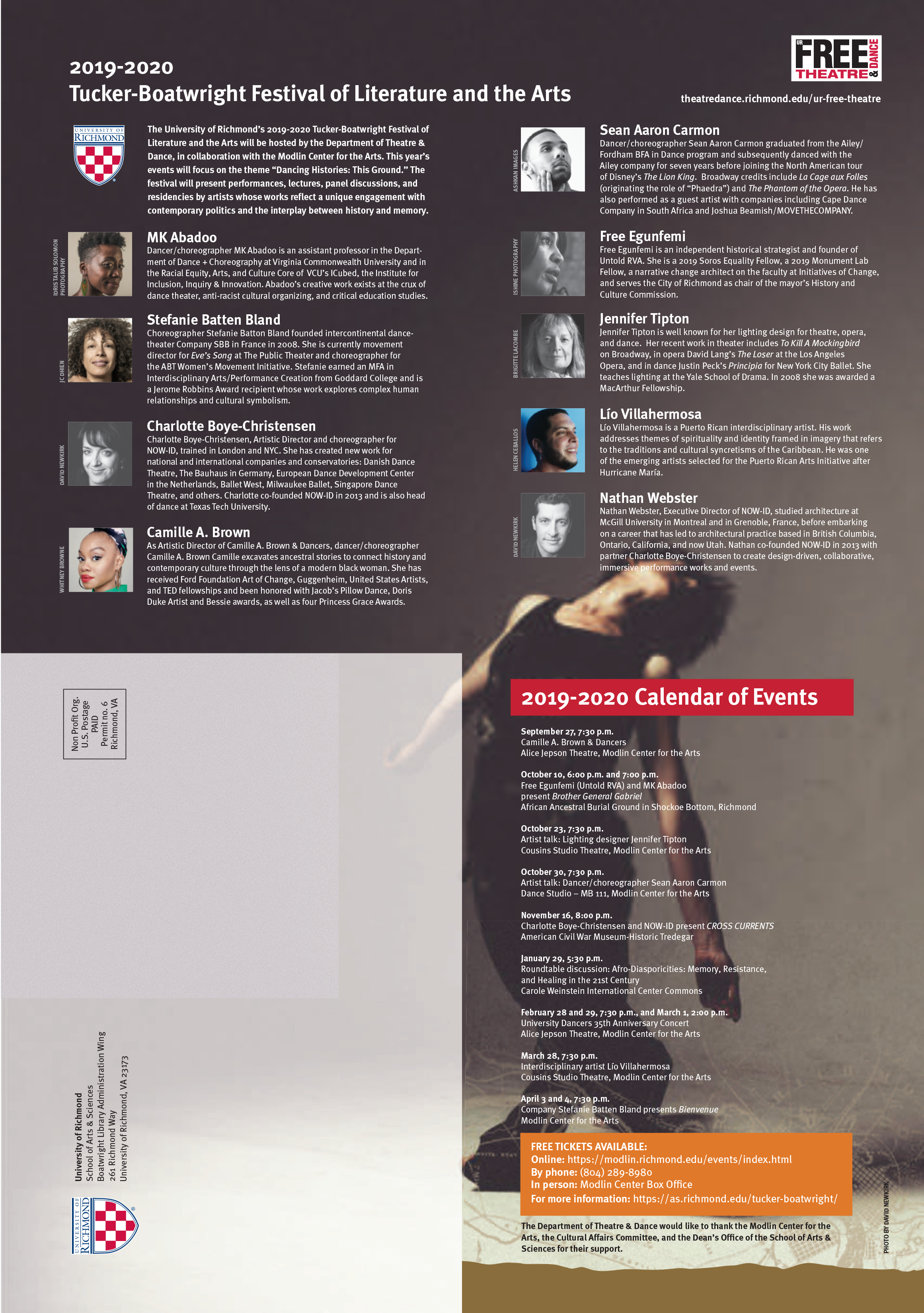
We are excited to be part of this festival in November. If you are in Richmond on November 16th, come to the Tredegar Iron Works museum, where we are performing a newly commissioned work. More information to come!
A Throwback Thursday shout out! /
A Throwback Thursday shout out to our incredible hair and makeup team led by @stephstylin1 .... Amazing artists!
We are excited to soon announce our next project in November... /
Thank you to Jan Andrews for editing this short video for us. /
Thank you! /
Thank you to the Australian Council for the Arts for featuring and highlighting our project “A Tonal Caress” from last year in their annual report.
This project featured Deaf artist Walter Kadiki.
Photos from NOW-ID's Rite of Spring captured by Jeff Juip and David Newkirk. /
Thank you to everyone who joined us for our pre- performance dinner event last Saturday, catered by cytybyrd. /
Showtime tomorrow! /
There is still time to get your tickets to NOW-ID's Rite of Spring on Saturday, June 22nd at 9 PM below the 600 N on-ramp!
Please read on to find more information about attending the performance, below images from rehearsal on site yesterday...
RE PARKING AND ARRIVAL:
For those attending the performance, use street parkingalong 500 West and 500 North and come to the check-in station on the southeast corner of 600 North and 500 West(see diagram below).
RE ATTIRE:
Do dress warm - it may be a little cooler than we expected for June 22!
We look forward to seeing you all there!
Rite of Spring /
Read the preview for Rite of Spring in 15 Bytes here.
10. RITUAL ACTION: DARK BEAUTY /
The below post is the tenth in a series of 13 texts related to NOW-ID's 2019 Rite of Spring taking place on June 22 in Salt Lake City, loosely following the 13 episodes in Stravinsky's score. Ritual Action: Dark Beauty is by Kate Mattingly, Assistant Professor at the University of Utah. Get your tickets to the performance here.
Looking at costume designs by Mallory Prucha for NOW-id’s Rite of Spring alongside drawings by Nicholas Roerich for the 1913 version, there are striking similarities: the red, black, and white palette, the angular poses of dancers’ bodies.
"Three Figures (A Youth and Maidens), Act I" by Nicholas Roerich is a 1912 tempera, watercolor, ceruse, pencil, bronze and silver on paper
And there are differences: instead of intricate patterns around the hem, Prucha’s pants for the dancers appear worn and shredded. They suggest that these dancers have already been through the exhausting ritual and are now performing the dance for a third or fourth time. There’s a compelling tension between the durability of the fabric––which Prucha calls “Monk’s Cloth”––and the wear and tear created by dancing. Instead of peasant-like blouses, dancers in NOW-id’s version will wear body-paint. The deterioration of the paint as dancers sweat and partner one another adds to a sense of disintegration.
Instead of a ritual that begins with pristine garments, NOW-id’s Rite of Spring presents a more somber view. Costumes by Prucha enrich this atmosphere. Charlotte Boye-Christensen says Prucha is her “aesthetic-soulmate,” and multiple times during our conversation, she repeats how grateful she is to be working with Prucha.
Rite of Spring marks their first collaboration, starting with the version performed in February of 2019 in Lubbock where Prucha is an Assistant Professor of Costume Design at Texas Tech University. This summer Prucha is working with Utah Festival Opera in Logan and continuing the collaboration with NOW-id for the Salt Lake City iteration of Rite. “There’s something really valuable in starting a conversation, and then continuing that conversation,” says Boye-Christensen of their collaboration. “It is unusual, and a luxury in creative work, to see a first iteration, then a second, and a third.”
When Prucha and Boye-Christensen return to Lubbock this fall, they will present the third iteration on a much larger cast for three nights in mid-October in a cotton gin shed. Prucha’s decision to use the cotton, “Monk’s Cloth” material for the costumes will be apt for this setting.
This fabric also adds to the industrial setting of the performance this month. It is functional and heavy, suggesting a worker’s attire or pagan costume. There’s also a long history of the material being used for embroidery and associated with “women’s work.” The sturdiness of Monk’s Cloth was attractive to Prucha because it symbolized the strength of women who have produced textiles for centuries. Referring to a book by Elizabeth Wayland Barber, called Women’s Work: The first 20,000 Years, Prucha adds that women have been at the forefront of fabric manufacturing, in part because they could make textiles while cooking, taking care of homes, and raising children. In contrast to the narrative of the 1913 Rite, that a woman must be sacrificed for a community’s well-being, this version foregrounds ideas of female empowerment.
As she created the choreography, Boye-Christensen found that she was inspired by the voluminous pants by Prucha: “The costume designs are feeding the choreography. When I saw the pants I started creating these low walks that made the costumes look like a skirt.” She adds that she loves how the costumes suggest both dresses and warriors’ garments.
Instead of making the dancing look smooth or streamlined, Boye-Christensen is intentionally keeping the movement “awkward.” She likes how this alludes to pagan rites that are performed by a community of people rather than by trained artists. The body paint contributes to this idea of ritual action by disintegrating as the dancers perform: in other words, the ritual generates its impact by being lived and experienced. The blurring of paint leaves traces and residues, much like the patina that covers most of the surfaces under the overpass and in the foundry. This layering makes visible the dancers’ labor, and their exhaustion.
When she is not designing for opera, dance, and musical theatre, Prucha works on composite drawings for law enforcement, and recently completed a sketch for the Lubbock Police Department. She talks about this part of her research as connected to her theatrical productions because both are about understanding archetypes and aesthetic frameworks.
“Costumes speak about identity and communicate ideas about character traits,” says Prucha. “There’s a quote I love, that defines ‘character’ as the essence of an idea.” Her designs for the Rite of Spring operate as both an added layer of communication, and a barometer of the performance’s exertion. Her costumes will absorb the sweat and toil of the dancing, becoming tangible artifacts for a fleeting art form.
Drawings above by costume designer Mallory Prucha.
Inspiration for Rite of Spring. /
9. Glorification of the Chosen One - Kate Mattingly /
The below post is the ninth in a series of 13 texts related to NOW-ID's inaugural Rite of Spring, loosely following the 13 episodes in Stravinsky's score. Glorification of the Chosen One is by Kate Mattingly, Assistant Professor at the University of Utah. Get your tickets to the performance here.
—
Exhaustion plays a crucial role in the story and score of The Rite of Spring. Stravinsky’s music builds from spare, almost melancholy melodies to swirling, pulsing, and pounding rhythms. Choreographers have reflected this intensity and velocity in movement that tests the limits of dancers’ capacities.
One of the Joffrey Ballet dancers who performed the role of the Chosen One, the virgin who dances to death, in the company’s reconstruction of Nijinsky’s choreography, described the fatigue as distinct from other ballets: "A lot of times in ballet you get winded, your breath is short and you start to lose some of the control in your legs. At the end of the Chosen One, it feels like your legs have melted beneath you," said Anastacia Holden.
Parallels could be drawn between the physical disintegration that is produced through the choreography and the environmental disintegration that happens in neighborhoods where industries are no longer relevant. The area where NOW-ID has chosen to perform their Rite of Spring used to be a flourishing center for metal casting. The May Foundry, located at 454 West 600 North, was established in 1912 by Ruben May, and lasted more than 100 years before shutting down a couple years ago. Mike May, great-grandson of Ruben, was the general manager in 2014 when he told Company Week that foundries are “misunderstood” as relics and irrelevant. May Foundry produced 80 types of metal, including super-duplex stainless steel and ductile iron. Their client roster included companies like Caterpillar and Barnes Aerospace. In addition, they worked with military, automotive, industrial, and agricultural clients.
But the company couldn’t survive the economic downturns and technological advances of recent years, and its machinery now stands unused. Such devastation, especially when it occurs to a business that is family-owned, can take a toll on individuals. Evidence of just how quickly industries can change, the foundry looks more like a museum than a factory. To situate a Rite of Spring in its vicinity seems to beg the questions, “How do we sustain changing economies? How do people transition when vocations that were once needed become obsolete? How does the physical exhaustion that the Rite of Spring presents help us think through and perhaps work against assumptions that people are disposable?”
Rehearsal shot of Rite of Spring. /
Liz, Jo, Tara and Sydney.
8. Mystic Circles: The Weather in Space - Liz Ivkovich /
The below post is the eighth in a series of 13 texts related to NOW-ID's inaugural Rite of loosely following the 13 episodes in Stravinsky's score. The author, Liz Ivkovich, is also a dancer in the piece. Get your tickets to the performance here.
—
Mystic Circles: The Weather In Space
The exclusion zone outside of Chernobyl is a 770 mile wide ring of empty villages that will be uninhabitable for thousands of years.
Hours after the 1986 explosion, a Soviet team flew their helicopter around this circle to try to figure out what the hell had happened and measure active radiation contamination. The pilot spotted a strange looking cloud and flew towards it. “Large beads of liquid began to form on the canopy [of the helicopter]. At first, [the pilot] thought it was rain. But then he noticed that it wasn’t breaking over the glass like water: instead, it was strange, heavy, and viscous. It flowed slowly like jelly and then evaporated, leaving a salty-looking residue. And the sky remained clear…”*
It was a cloud of radioactive particles.
A circle blurs origin point and return, as mystic blurs supernatural and earthly. When I read “mystic circle”, I picture this cloud of radioactive particles landing softly as dust in an ever-widening loop around Chernobyl. This mystic circle is not innocuous. Stacy Alaimo says “... the environment, which is too often imagined as inert, empty space or as a resource for human use, is, in fact, a world of fleshy beings with their own needs, claims, and actions.”**
These radioactive fleshy beings surely have their own needs, claims, and actions that we cannot know. If I see them through this lens, Tracy K. Smith’s poem The Weather in Space gives me the creeps.
The Weather in Space
Is God being or pure force? The wind
Or what commands it? When our lives slow
And we can hold all that we love, it sprawls
In our laps like a gangly doll. When the storm
Kicks up and nothing is ours, we go chasing
After all we’re certain to lose, so alive—
Faces radiant with panic
*From Midnight in Chernobyl: The Untold Story of the World’s Greatest Nuclear Disaster by Adam Higginbotham
**From Bodily Natures: Nature, Environment, and the Material Self
Thank you to everyone who came to Pecha Kucha last night. /
Thank you to all who came to Pecha Kucha last night, to our awesome presenters, to our generous sponsors and to everyone who helped to make this event phenomenal!
#pechakuchaslc #nowidslc #design#architecture #performance#coolspaces #addictivebehaviour#publikslc #lazizslc#dentedbrickdistillery
Richmond, Virginia /
Nathan, Charlotte and Cole.
We have been commissioned by the University of Richmond to do a site-specific project under the Manchester Bridge in November and went there this week to have a look at that space and others.
Inspiring trip.
Thank you to Anne Van Gelder, the Director of Dance, for hosting us so beautifully!













